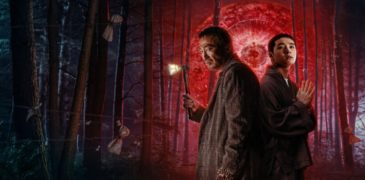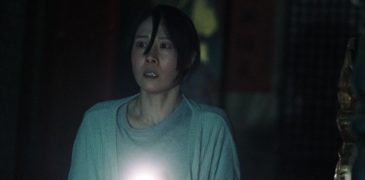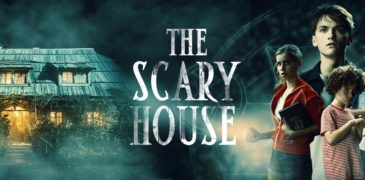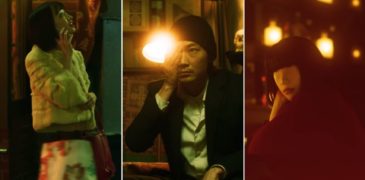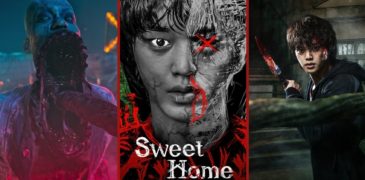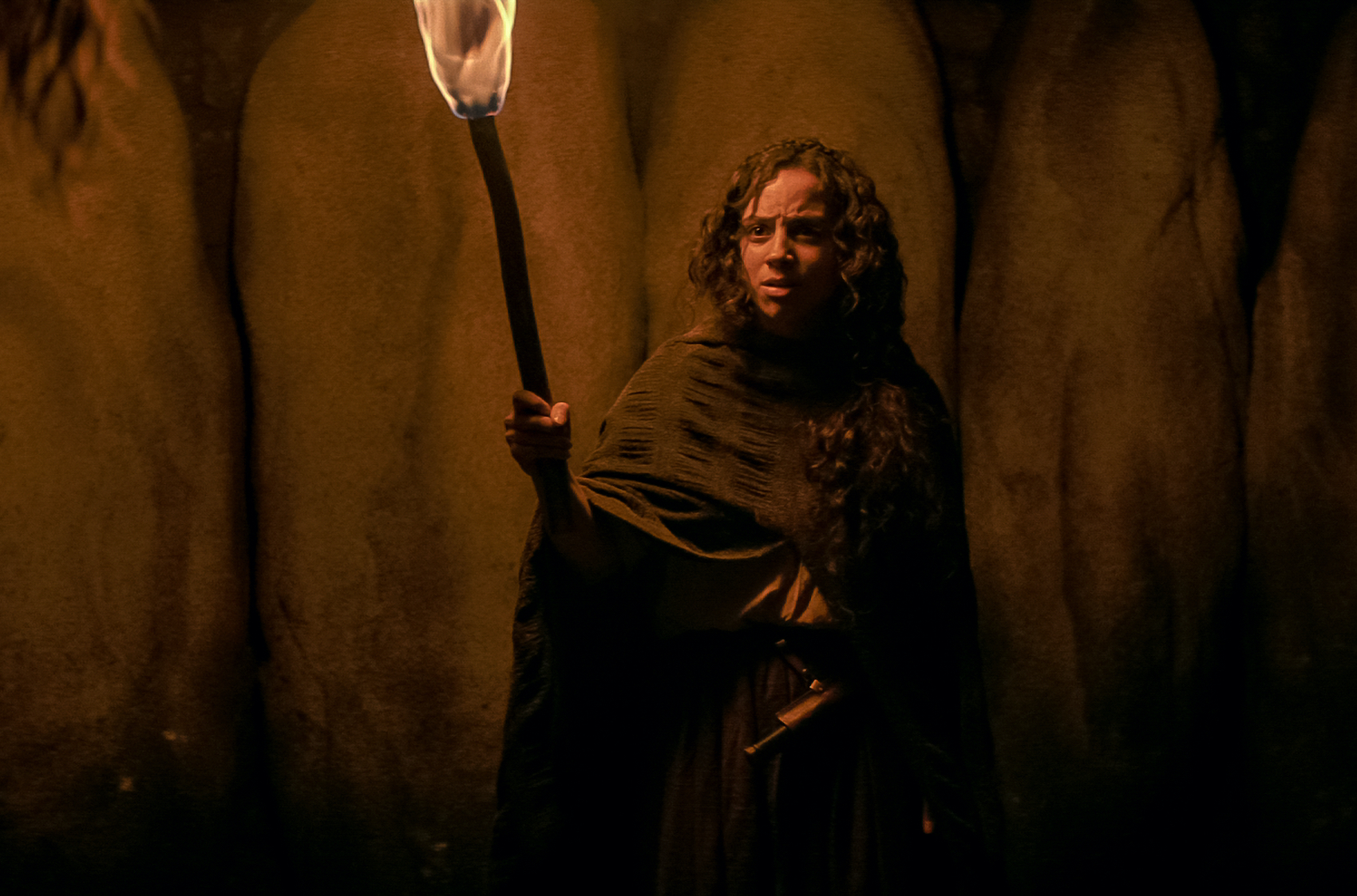
Film trilogies are a tricky business. With the exception of Lord of the Rings and Star Wars, most trilogies don’t set out planning to tell a singular story across three films. If the first film was successful then maybe they would continue a plot or theme, but oftentimes, the sequels were just the same characters in a different story. The Fear Street Trilogy, whether you love it or hate it, stands out in idea alone if nothing else. A single story that is told across three separate films is a gutsy move in Hollywood as the funding for the next film typically relies on the box office success of its predecessor. The Fear Street Trilogy was originally made by Fox Entertainment but was pulled from the release schedule in 2020 due to the Covid-19 pandemic. When Disney acquired Fox, they inherited a cache of films that didn’t fit their brand, and thus Netflix purchased the completed Fear Street Trilogy. Netflix isn’t too keen on releasing their budgets for films, or their viewership numbers for that matter, so it is unclear just how successful the trilogy has been for the streaming company, but with the hype surrounding these films it is safe to say that this might not be the last time we visit Shadyside.
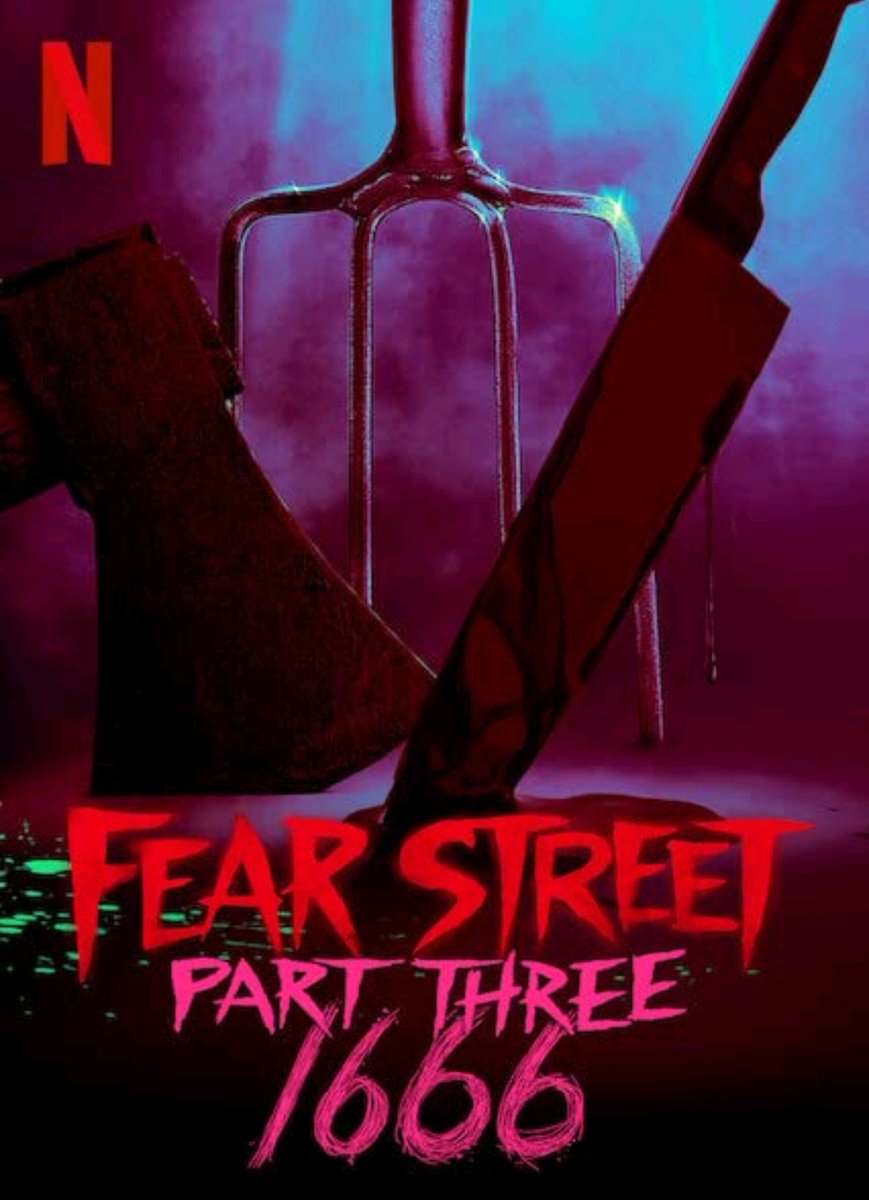
In the final scenes of Fear Street: 1978, we see Deena reunite the severed hand of Sarah Fier to her body in hopes to break the curse that was placed on Shadyside, but upon touching the body Deena (through an extended dream) is taken back in time to 1666 to live out Sara Fier’s final days. Before Fear Street: 1666 began, I found myself wondering what kind of soundtrack it was going to have. I’m sure that “Cromwell’s Panegyrick” was a rousing ballad in 1647, but I doubt that modern-day viewers would be as amused. Thankfully the lack of radio hits in 1666 allowed for Marco Beltrami to craft a minimalist but fitting score for the flashback sequence that was a breath of fresh air for me, as the rapid-fire song nostalgia of the first two films had started to wear on me.
Almost all of the characters from the first two films are present in Fear Street: 1666 even falling into their same story roles, but this time as a distant relative of their characters from before. Since writing the reviews for the first two Fear Street films, I have done a bit of research on the actors from the films as they were all pretty new faces aside from Sadie Sink and Gillian Jacobs. I can safely say that none of them are English actors speaking in an American accent. I know. That is a random thing for me to say. Well, I only happen to bring it up because, for some reason, all of the characters are now speaking in an English-y accent. There is a very good reason that American actors typically don’t try to speak with an English accent in films and that is because it never passes as authentic. A lot of English actors excel at speaking in an American accent, and honestly, you’d never know they weren’t American but I can promise you I never once thought that any of the actors in FS: 1666 were English.
While FS: 1994 didn’t make a big deal out of Deena and Sam’s sexuality, FS: 1666 makes it a central part of the story. Sarah Fier (who is essentially Deena) is in love with Hannah (Sam) but clearly, in a puritanical time, their sexuality would not be accepted and it could very well mean their death. As livestock in the town starts to die and the well is poisoned the townspeople begin to panic and believe that someone has cursed the town with witchcraft. After Hannah fights off an unwanted sexual advance from Elijah Goode, he witnesses Sarah and Hannah’s secret rendezvous in the woods and in turn accuses both of them of making a pact with the Devil. Now, there are several twists and turns in the story that I don’t want to spoil for you if you haven’t seen the film so at this point if you want to keep going, we will hit some spoiler territory. I am not going to break down every scene of the film, but rather try to examine some of its major themes.
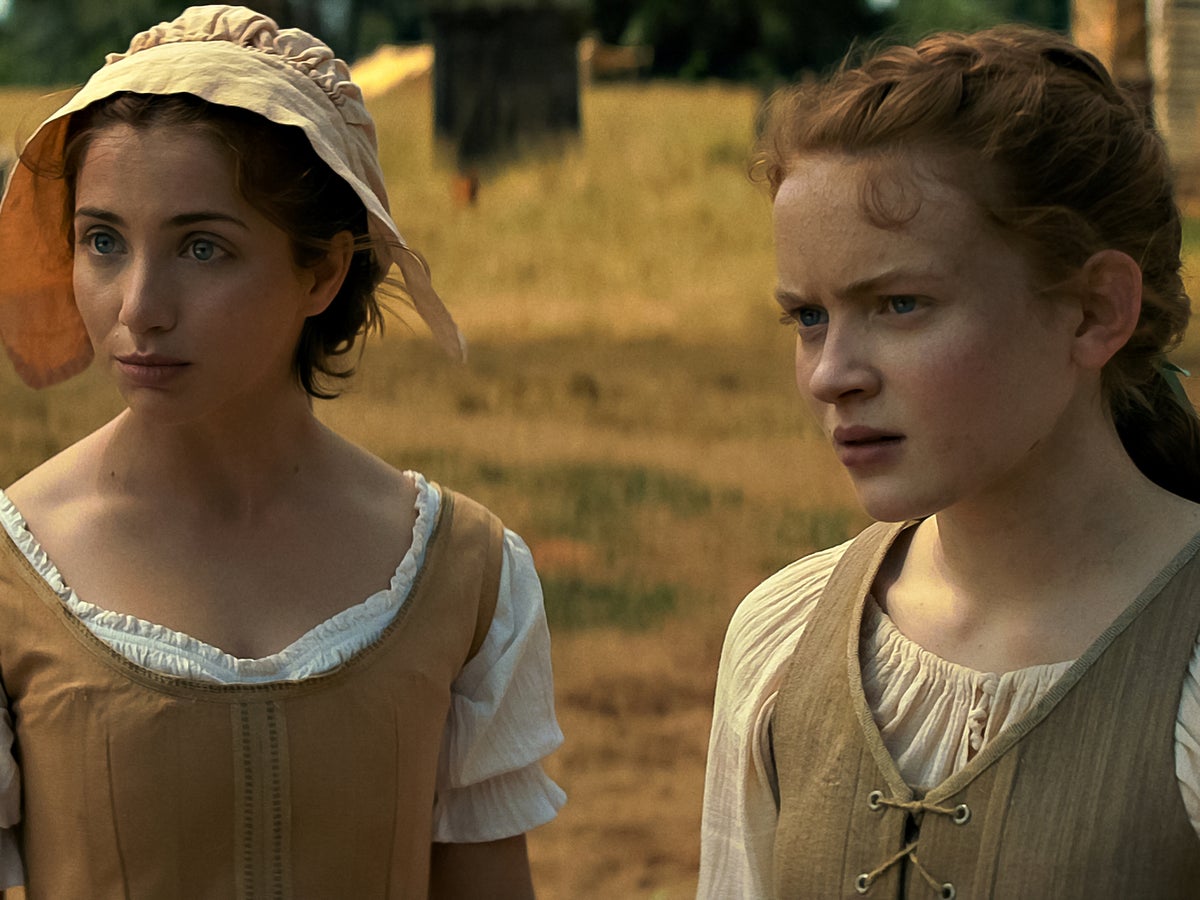
By this point in the film, Sarah Fier has already stumbled across the site of some sort of ritual magic so it is safe to say that she is at least not the witch that we thought she was or maybe not even a witch at all. Once the town has decided that both Sarah and Hannah are witches solely based on their sexuality, panic sets in for the two as they scramble to find a way out. Sarah returns to the ritual site and finds that the one who has actually made a pact with the Devil is Solomon Goode, the ancestor of town Sheriff Nick Goode. I feel a little dumb for not suspecting Sheriff Goode sooner because he was purposefully kept a mystery throughout FS: 1994. He always seemed to show up at just the right time, but he was also fulfilling the typical law enforcement role from slasher films: always present, but never capable of stopping the murder.
Once our time in 1666 has ended the allegories of the film trilogy start to take over the plot. This is one of my favorite things about the entire trilogy: that it is not afraid to go all-in on its message. Horror films, for a lot of people, are a way to deal with their own fears in a safe and controlled environment and the very best horror films leave us with ideas that we need to sit with and contemplate for a while. Some are subtle and subjective, but others are very pointed and purposefully challenging the viewer on a specific topic. Fear Street from the very beginning is challenging the viewer to examine the persecution of the LGBTQIA+ community.
Deena and Sam are queer characters that are being chased by a supernatural horror. At first, I was happy to see that their sexuality wasn’t a plot device, but as the story of the trilogy unfolded I was able to see just how subtle that message was. Even though I didn’t see it, the persecution was always present for Deena and Sam. In FS: 1666 this became the forefront of the conversation that director Leigh Janiak was having with the viewer. Sam struggles with accepting her sexuality in 1994 because of the social persecution that she might face, but her 1666 counterpart Hannah cannot accept her sexuality for the fear of death. For Deena, she accepted the social persecution, and Sarah Fier, in the end, accepted her self-sacrifice to save Hannah.
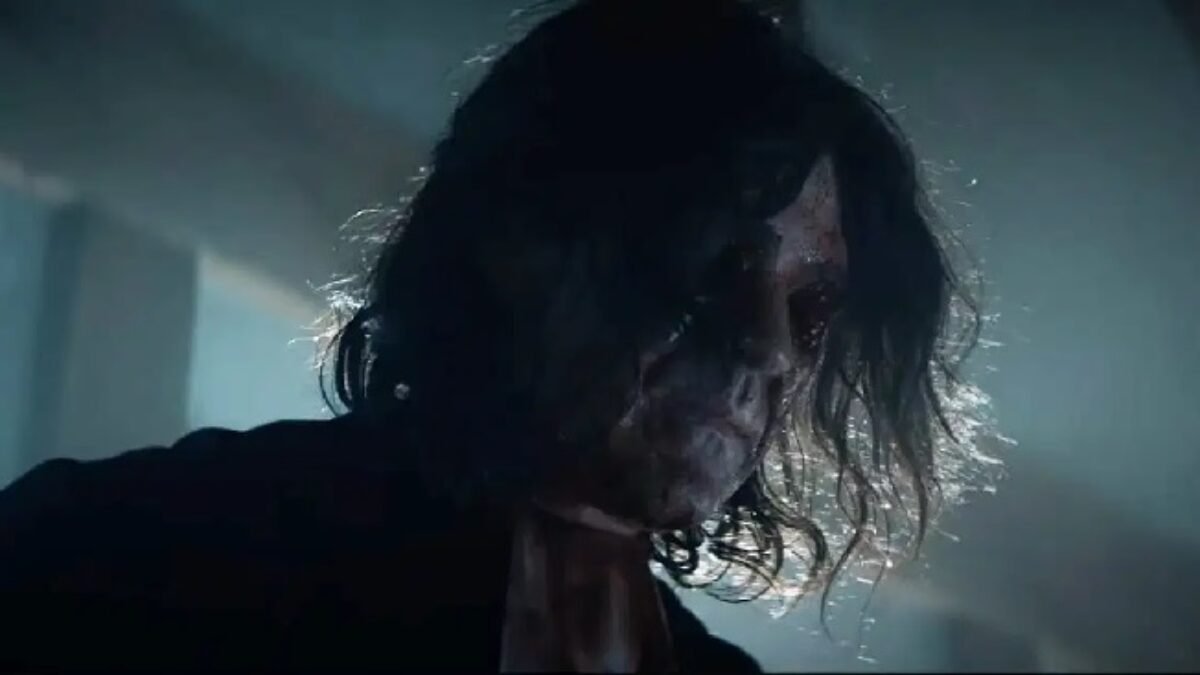
The issues of LGBTQIA+ persecution alone are enough to be the full subject of a film, but Janiak decided to tackle another issue through the trilogy as well: the wealth gap. Once Deena learns that Sarah Fier did not curse Shadyside in the way that everyone thought, she realizes that the true killer is Sheriff Goode and while it was a bit out of left field, I found the reason for his villainy exceptionally interesting. The Goode family has passed the responsibility down to every generation of Goode men to offer a soul to the Devil so that the family may be prosperous. The souls that they end up cursing are always those who are less fortunate be it socially or financially.
The disparities between the communities of Sunnyvale and Shadyside that dominate the trilogy are more than just circumstantial. The Goode’s are deliberately sabotaging any chance for Shadyside to prosper. The stories and falsehoods that the Goode’s have created about Shadyside are what has truly cursed the community. It isn’t just that bad things happen to people in Shadyside, but also that it is expected that bad things will happen to people in Shadyside. This was such an appropriate allegory for so many areas of the world when those in power often exploit the less fortunate for their own gain.
As much as I have loved the Fear Street Trilogy, I do have to say that Fear Street: 1666 was my least favorite entry. The story flowed seamlessly from its predecessors and it definitely felt like a continuation of the story, but I felt like it left me wanting more time in the film. Having a planned trilogy is a bit of a curse of its own because a very strict timetable has been set. All of the questions and storylines from the first two films have to be tied up by the end of the third film and in the case of FS: 1666 I felt that made it feel rushed. In reality, Fear Street could have easily been a limited series with multiple episodes to fully let the story breathe.
Although the films did an excellent job of developing characters and unique lore over three films, having more time to fully explore these elements would have given the trilogy the extra depth that it needed to perfectly wrap up its story. As it stands, Fear Street: 1666 is still a worthy entry in the trilogy and an absolute must-see if you were a fan of the first two Fear Street films.
More from Netflix:
While zombies have traditionally been mostly influenced by Western culture, the zombie sub-genre has been getting a resurgence these past few years thanks to South Korea. Zombies are some of… Konnichiwa! Dia Duit! Wazzup! Straight Outta Kanto here braving the torrential rain and grim humidity of Summer in Ireland to bring you a review of biblical proportions. Originally a casualty… Even though the Asian horror movie craze is not as potent as it was back in the early 2000s, new titles have managed to make their way overseas and have… The Strange House/The Scary House is proof that Austrian cinema deserves attention, even if one doesn’t consider famous directors like Michael Haneke or Jessica Hausner. It is also proof that… Susumu Nokoshi once worked for a top foreign financial company. He is now a 34-year-old homeless man, usually found around a park in Shinjuku. He then meets medical school student… Sweet Home, a South Korean horror TV show based on a webtoon of the same name, is a story about an epidemic that causes humans to transform into horrific monsters,…The Top 5 Most Memorable Zombies of Pinoy Cinema
The 8th Night Film Review (2021) – Korean Horror on Netflix
Incantation (2022) Film Review – An Incredibly Competent Addition To Asian Horror And Found Footage Catalogs
The Strange House (2021) Movie Review – Pitch-Perfect ’80s Kids Mystery-Horror
Homunculus (2021) Team Review – What Would Your Trauma Look Like?
Sweet Home (2020) Series Review: Horror, Tragedy and Monsters

